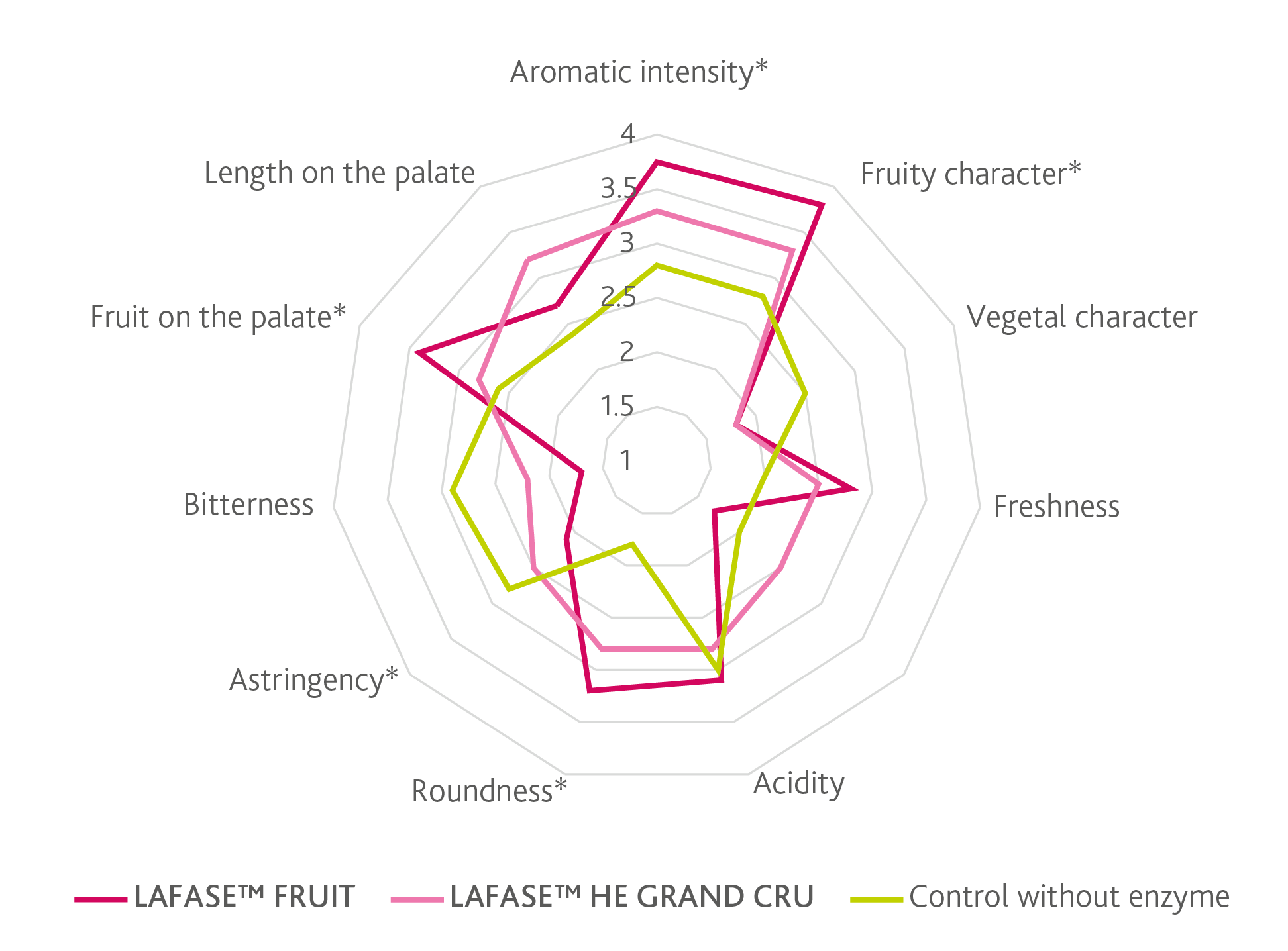Interest of red extraction enzymes
|
|
COMPLEXITY OF PECTIN STRUCTURE AS A FUNCTION OF THE LOCATION OF THE GRAPE BERRY CELLS.Research programme (2013-2016) – BIOLAFFORT® in collaboration with John P. Moore’s team (University of Stellenbosch). Schematic diagrams inspired by the “HYPOTHETICAL MODEL OF THE GRAPE WALL – Yu Gao” – 2016. |
 |
Pectin structure: mainly composed of galacturonic acid, with little branching. This constitutes the main, linear chain of the pectin. For this application, a suitable enzymatic formulation must mainly be composed of pectinases (PL, PG and PME*). |
 |
Pectin structure made up of linear parts (main chain) and branched portions (secondary chains).
|
 |
Pectin structure made up of linear parts (main chain) and many branched and complex portions (secondary chains). For this application, the enzyme formulation must combine the main activities (PL, PG and PME) and specific secondary activities such as Rhamnogalacturonase II for the extraction of positive compounds of interest. |

IMPACT OF RED EXTRACTION ENZYMES ON FINISHED WINES.Actions common to all LAFFORT® red extraction enzymes.
|
Wine volumes when pressing: free-run and press wine  Pilot-scale study carried out at the LAFFORT® experimental cellar. |
Improving the release of compounds of interest and facilitating clarification steps for the preparation of wines for bottling. • Promoting the release of phenolic compounds such as anthocyanins and tannins.• Improving colour stability by extracting phenolic compounds that are more stable over time. • Contributing to the sensory quality of wines: extraction of Rhamnogalacturonan II and similar compounds which combine with tannins, leading to a reduction in astringency (Vidal 2004). • Respecting the fruit profiles of wines through selective extraction by specific secondary enzymatic activities. • Depectinisation of wines: facilitating the filtration and clarification of wines for bottling. |
Average degrees of polymerisation – Merlot  Study carried out at the LAFFORT® experimental cellar (2 hL tank, enzyme doses of 3.5 g/100 kg of grapes). |  This tasting was carried out by 19 trained tasters on a Merlot wine after malolactic fermentation.The wine-making conditions were identical. Enzyme doses of 3.5 g/100 kg of grapes.* Statistically significant. |
For more information on red wine extraction enzymes
LAFASE™ HE GRAND CRU
Purified pectolytic enzyme preparation for the production of full bodied red wines that are rich in colouring matter and structured tannins, destined for ageing.
LAFASE™ FRUIT
Purified pectolytic enzyme preparation for the production of fruity, colourful and round red wines.
Multiproduct download: select as many documents as you wish during your browsing, your basket is saved until its downloaded.


